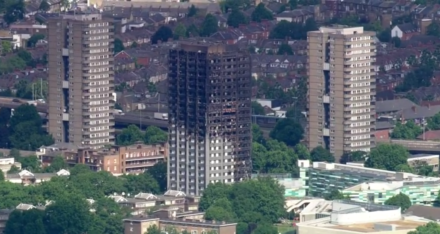
Firefighters have been giving evidence to the Grenfell Inquiry for the past three weeks. Parts of the media have rounded on their accounts, yet there has been silence on the reckless deregulation that meant the building was covered in flammable cladding and left without fire safety measures such as sprinklers. This has given the impression of firefighters being in the dock, despite stepping up to face mortal danger, risking their lives to save others.
The critical question, yet to come to the fore, is how and why was flammable cladding, the equivalent of 600 cars’ worth of petrol, part of the refurbishment? Firefighters were not responsible for that. Its presence was the result of the total failure of fire regulations. Watch manager Michael Dowden felt “helpless” on the night of the fire because deregulation transformed the tower into a sitting tinderbox.
A year after the catastrophe, it transpires that hundreds of buildings are clad in similar dangerous flammable materials. The firefighters on the night had to operate without this prior knowledge. But while the government has known for the last year about flammable cladding, it has stalled on removing it from hundreds of buildings, leaving residents in tower blocks fearful of another Grenfell. This was echoed last month by the Grenfell United member whose blog warned of the catastrophic fire before it happened. Over a year after the fire, the government has not taken urgent remedial action or strengthened legislation. It has recently responded with a consultation on the self-evident question of removing flammable cladding from buildings.
During the Grenfell Inquiry, fire safety expert Dr Barbara Lane described the failed implementation of fire safety regulations in the tower as evidence of a passive “culture of non-compliance”, listing cladding, ventilation systems, lifts, fire mains and doors as contributing to the disaster. The council must face scrutiny for these failures, and the government must be held to account for deregulation. MPs work in parliamentary offices with sprinklers: tower block residents should be afforded the same basic safety.
The recent fires in Mile End, Hampstead and at Whitstable Tower neighbouring Grenfell only strengthen the case against flammable materials on building exteriors. Diane Abbott, the Shadow Home Secretary, and I have written to the government calling for such a ban on unsafe combustible materials and for the government to outline deadlines for its implementation.
The fire and rescue service has again proved indispensable during the fires that have ravaged moorlands during the heatwave. It is absurd that since Grenfell the government has not revoked eight years of cuts to the service or reconsidered planned future cuts. Firefighters should not have to work in such overstretched conditions. Rather than depleting the service, their expertise must be centrally involved in the fire safety strategy of residential buildings. The Fire Brigades Union emphasised the importance of a statutory body of experts, industry, union and fire rescue representatives as far back as 1973, when a fatal fire involving cladding at the Summerland Leisure Centre killed at least 50 people. Subsequent deadly fires including those at Lakanal House, Garnock Court and Grenfell Tower have made this critical.
Grenfell Tower should have been a turning point. An overhaul of fire safety regulations that put public safety first is central to ensuring the lessons of the past are not lost. Survivors and bereaved families need justice, which meams providing them with permanent housing and correcting this avoidable tragedy.
Karen Lee is MP for Lincoln and shadow minister for fire.




More from LabourList
LabourList Christmas quiz 2025 round 1: Put your party knowledge to the test
‘It was the best of times, it was the worst of times… my first four months as Editor’
‘Labour have a credible path to ending Britain’s dependence on food banks and have taken the first steps along it’